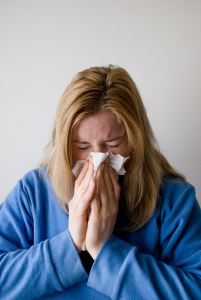Selenium is an essential micronutrient. Humans cannot synthesize it. Therefore, we must get it from our diets. The selenium content of our diets depends on the richness or poorness of the selenium in the soil and the food. In fact, there are surprisingly large differences in selenium content in various regions of the world [Zhang 2020a].

Selenium through its incorporation into 25 known selenoproteins is necessary for a range of biological functions. Zhang et al [2020a] list the following biological functions of selenium and selenium-derived selenoproteins:
- Antioxidant function
- Anti-inflammatory function
- Anti-viral function
- Cellular redox function
- Immune cell function
- Protection of the cardiovascular system
Selenoprotein Functions Relevant to Viral Infections
Selenium and selenium-derived selenoproteins such as the glutathione peroxidases (GPXs), the thioredoxin reductases (TXNRDs), and the endoplasmic-reticulum-associated selenoproteins influence viral pathogenicity. Among other things, these antioxidant selenoenzymes reduce the extent of oxidative stress generated by viral pathogens. Failure to counteract oxidative stress can result in mutations in the viral genome from benign to highly virulent strains [Zhang 2020a].
Selenium Deficiency and Virulent Strains of Viruses
In studies of laboratory mice that were unable to synthesize the selenoenzyme GPX1, Beck et al showed that both the coxsackievirus B3 and the influenza A/Bangkok/1/79 (H3N2) virus mutated into more virulent forms that caused more severe disease or death. Thus, selenium deficiency can not only induce the disease causing activity of viruses but can also intensify the effect of the viruses [Beck 2004].
Selenium Supplementation and Viral Infections
Selenium supplementation has conferred documented clinical benefits in the case of several types of viral infections [Zhang 2020a]:
- Coxsackievirus B3 virus
- Hanta virus
- Hepatitis B virus
- HIV-1 virus
- Keshan disease caused by mutated Coxsackievirus and selenium deficiency
Selenium Deficiency and COVID-19
The research literature shows an association between selenium deficiency and the incidence and severity of COVID-19 disease [Zhang 2020a; Zhang 2020b].
What are the mechanisms by which selenium supplementation can ameliorate the effects of the SARS-CoV-2 virus?
- Selenium supplementation may stimulate increases in T cells and NK cells.
- Selenium supplementation may reduce the level of inflammatory cytokines.
- Selenium supplementation may decrease the extent of oxidative stress by increasing the GPX selenoenzyme reduction of harmful free radicals to harmless water or alcohols.
Moreover, there is some reason to think that the SARS-CoV-2 virus may target selenoproteins at the mRNA and the protein levels, thus damaging selenoprotein biosynthesis. This might be a factor in the development of COVID-19 disease [Zhang 2020a].
Conclusion: Selenium and Viral Infections
- Selenium deficiency leads to increased human susceptibility to viral infections [Zhang 2020a].
- Selenium supplementation may be necessary to improve innate immune system function and to regulate cytokine release.
- Elderly individuals are at risk of selenium deficiency, which is associated with higher levels of circulating inflammatory cytokines.
- Selenium and selenoproteins could lessen the force of virus-triggered oxidative stress, excessive inflammatory responses, and immune-system dysfunction.
Sources
Beck MA, Handy J, Levander OA. Host nutritional status: the neglected
virulence factor., Trends Microbiol. 2004;12(9):417–423.
Zhang J, Saad R, Taylor EW, Rayman MP. Selenium and selenoproteins in viral infection with potential relevance to COVID-19. Redox Biol. 2020a Oct;37:101715.
Zhang J, Taylor EW, Bennett K, Saad R, Rayman MP. Association between regional selenium status and reported outcome of COVID-19 cases in China. Am J Clin Nutr. 2020b;111(6):1297–1299.
The information presented in this review article is not intended as medical advice and should not be used as such.
